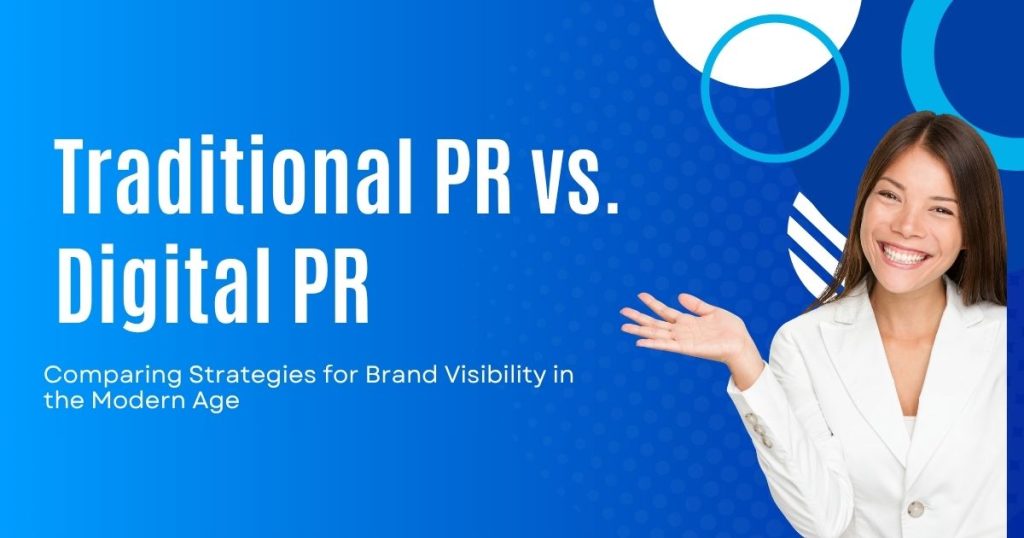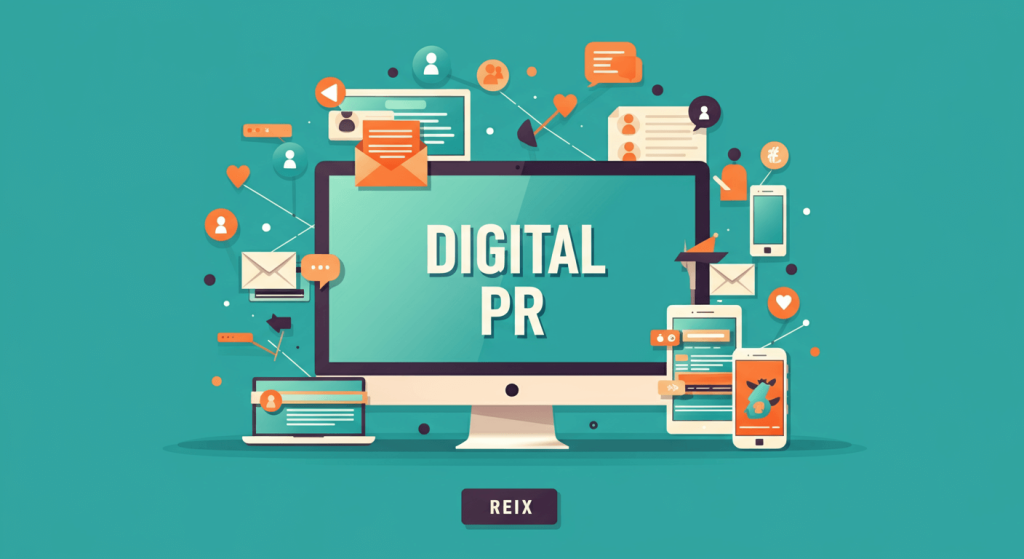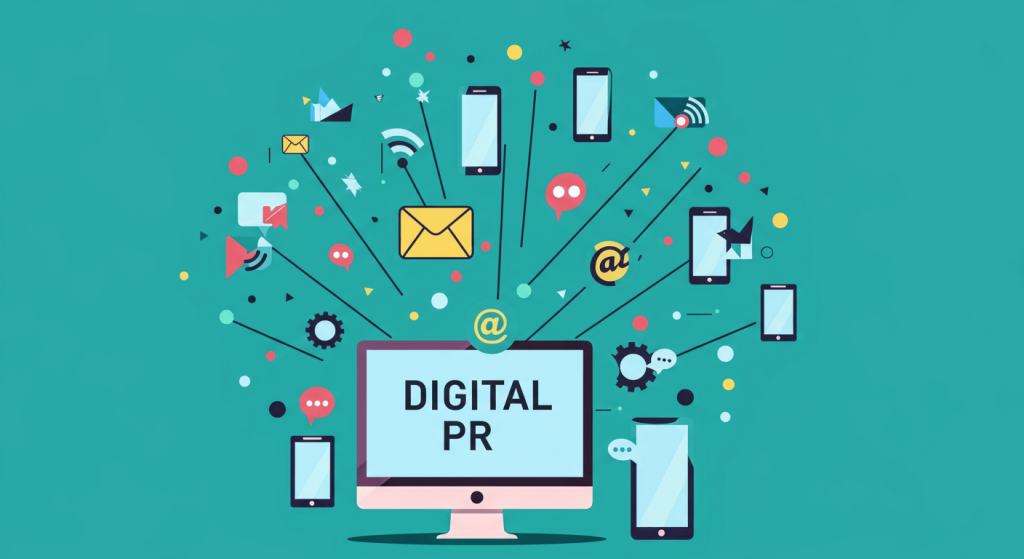Traditional PR vs. Digital PR: What’s the Difference?

The landscape of public relations (PR) has evolved tremendously over the years. With the emergence of digital platforms, traditional PR strategies have expanded to include a broader, Online-driven approach, giving rise to what is commonly known as Digital PR. But what exactly differentiates traditional PR from digital PR? And how should organizations decide which route to take (or how to combine the two)?
If you’re curious about how these two PR approaches compare and how each one contributes to a brand’s image, you’re in the right place. This blog outlines the key differences between traditional PR and digital PR, exploring their strengths, strategies, and how they can work together to achieve maximum impact.
What is Traditional PR?
Traditional PR refers to the time-honored strategies used by public relations professionals to manage a brand’s reputation and communications. The primary goal is to build and maintain positive relationships with the public, stakeholders, and key decision-makers using offline tools and media.
Key Elements of Traditional PR:
- Press Releases: Organizations use press releases to share news or announcements with journalists and media houses.
- Media Relations: Building relationships with editors and reporters from TV, radio, and print publications is a critical component.
- Event Management: From press conferences to charity events, traditional PR thrives on in-person interactions.
- Crisis Communication: Managing a brand’s image during a PR crisis falls under the domain of traditional methods.
Traditional PR largely relies on earned media coverage in outlets like newspapers, TV news, magazines, and radio. Success often depends on strong relationships with journalists and editors who curate the brand’s story for their audiences.
What is Digital PR?
Digital PR, on the other hand, takes public relations strategies into the online sphere. Its goals are the same as traditional PR—to boost brand visibility, build trust, and improve reputation—but the tactics and platforms differ greatly. Digital PR leans heavily on online tools to engage audiences and improve search engine rankings.

Key Elements of Digital PR:
- Online Press Coverage: This involves earning coverage from online publications, blogs, and news websites.
- Backlink Acquisition: Digital PR focuses on earning high-quality backlinks to improve a website’s domain authority and search engine rankings.
- Social Media Engagement: Platforms like Instagram, Facebook, and LinkedIn play a huge role in promoting brand communication.
- Influencer Marketing: Collaborations with online creators, YouTubers, and social media influencers help brands reach a targeted virtual audience.
- Content Marketing: From guest blog posts to infographics, Digital PR thrives on creating shareable, SEO-friendly content.
- Data-Driven Campaigns: Digital PR professionals use analytics tools to measure performance and adjust strategies in real time.
The Key Differences Between Traditional PR and Digital PR
While traditional PR and digital PR share the same overarching goals, the two differ in their tactics, channels, and measurement methods. Here’s an in-depth comparison:

1. Channels of Communication
Traditional PR:
- Utilizes offline channels like TV, radio, and print.
- Relies on face-to-face interactions such as interviews and events.
Digital PR:
- Heavily focuses on digital platforms, including social media, blogs, and online news portals.
- Leverages global audiences through virtual connections.
2. Audience Targeting
Traditional PR:
- Focuses on specific demographics by collaborating with media outlets tailored to that audience (e.g., local newspapers).
- Often constrained to a regional or national reach.
Digital PR:
- Uses precise targeting based on data, such as audience interests, behavior, and location.
- Offers global outreach, with the ability to customize content for different audience segments.
3. Measurability
Traditional PR:
- Measurement often relies on estimates, such as circulation numbers or media reach.
- Determining ROI can be challenging, as it leans heavily on intangible outcomes like reputation.
Digital PR:
- Results are easily measurable using tools like Google Analytics, SEMrush, and social media metrics.
- Tracks straightforward data points like impressions, clicks, engagement, and conversions, providing a clear ROI.
4. Cost Efficiencies
Traditional PR:
- Can involve significant costs due to event setups, media placements, and in-person activations.
- Results often take time and require sustained relationship-building with journalists.
Digital PR:
- Allows for cost-effective campaigns, especially for small businesses looking to capitalize on social media and influencers.
- Swift results when strategies are data-backed and targeted effectively.
5. Content Creation
Traditional PR:
- Focuses on crafting newsworthy press releases or speeches tailored for journalists.
- Conventional content tends to lean toward formal formats.
Digital PR:
- Prioritizes shareable, visually appealing content like infographics, blog posts, and social media stories.
- Encourages creative multimedia approaches to connect with a younger, tech-savvy audience.
When to Use Traditional PR or Digital PR?
Each PR approach has its strengths and is best suited for specific scenarios.

When Traditional PR Excels:
- Announcing groundbreaking news where major publications lend credibility (e.g., product launches).
- Building relationships with a more formal or older audience demographic.
- Regional or small-scale public outreach campaigns.
When Digital PR Stands Out:
- Promoting online-exclusive products or services (e.g., mobile apps, SaaS tools).
- Targeting global audiences with scalability.
- Boosting SEO and driving website traffic with backlink strategies.
Can Traditional PR and Digital PR Work Together?
Absolutely! Combining traditional and digital PR isn’t just effective; it’s essential for holistic brand management. For example:
- Use traditional PR to secure a feature about your company in well-respected newspapers, and use digital PR to share that feature widely on social media and build backlinks to it.
- Host a press event (traditional) and invite influencers to live tweet/vlog the experience (digital).
- Drive a product launch campaign by generating TV coverage (traditional) and boosting it with Instagram ads and shoppable posts (digital).
The Future of PR is Integrated
PR, at its core, is about storytelling and connection. While traditional PR serves as the backbone of reputation management, digital PR opens new doors for brands to connect in more meaningful, measurable ways. Whether you’re launching a new product, improving your search engine rankings, or building relationships with your community, leverage both traditional and digital strategies for maximum impact.
Do you have questions about where to start with PR? Whether traditional or digital (or both) feels right for your business, understanding their nuances is key to choosing the right strategy.





